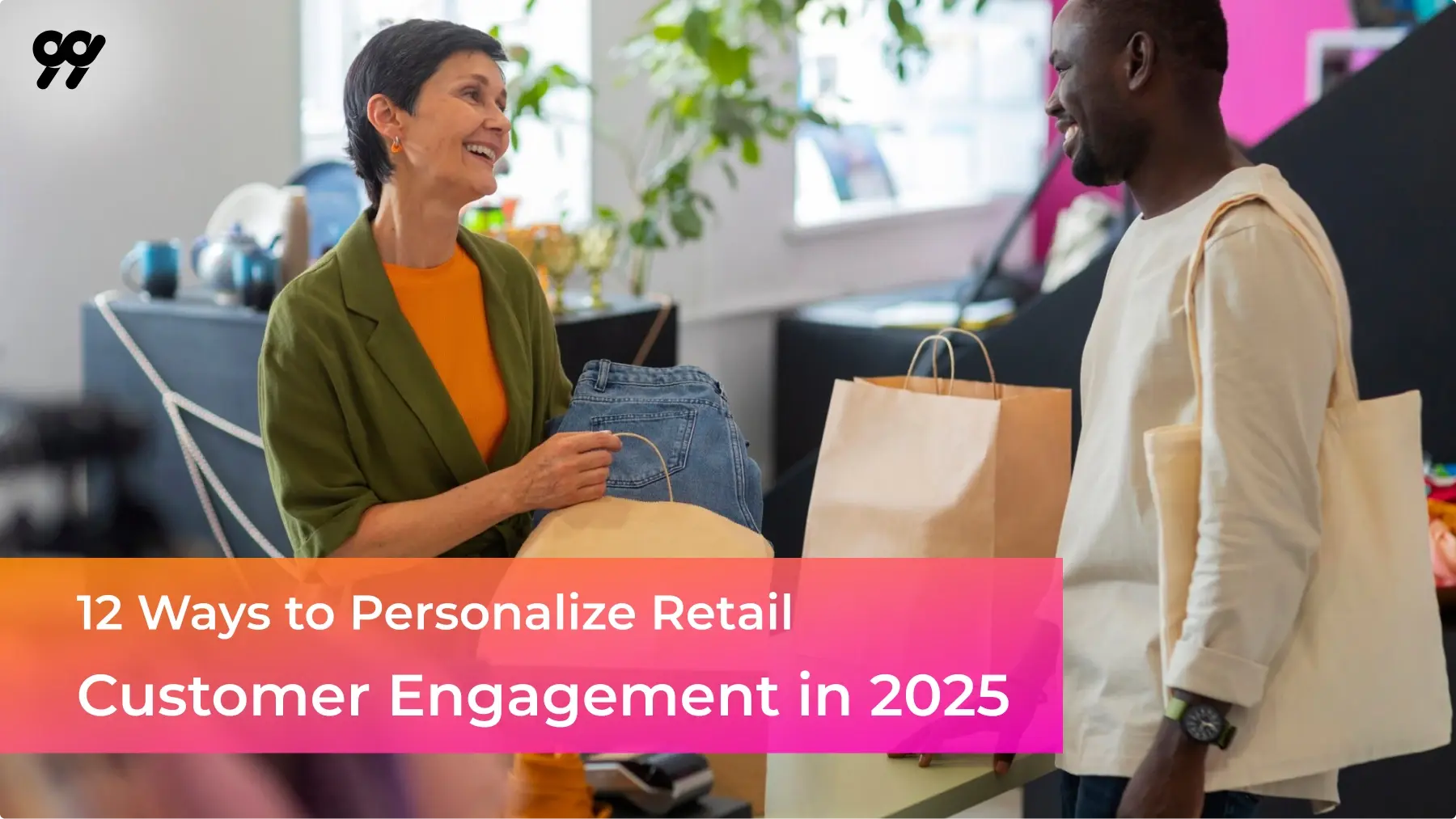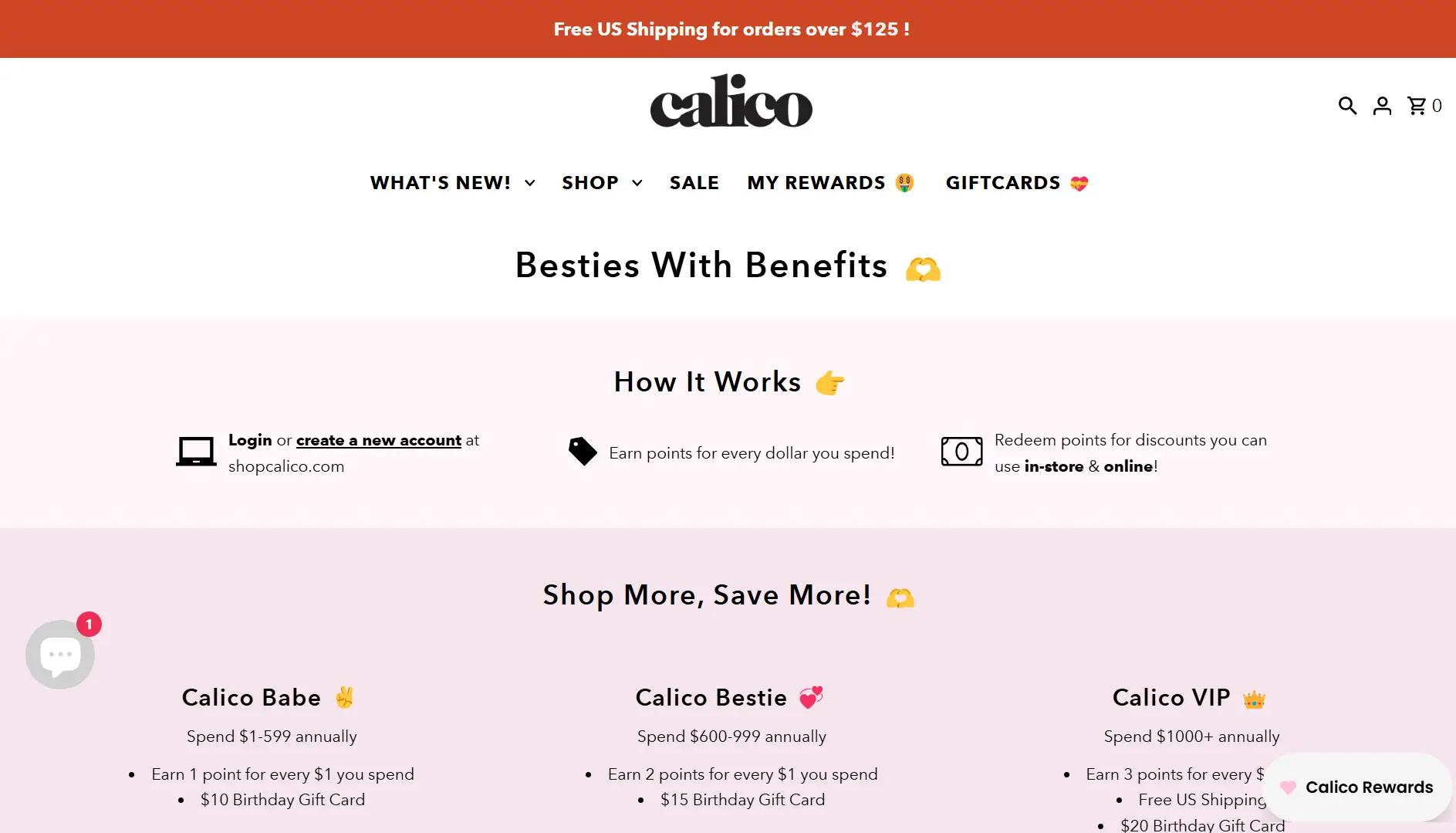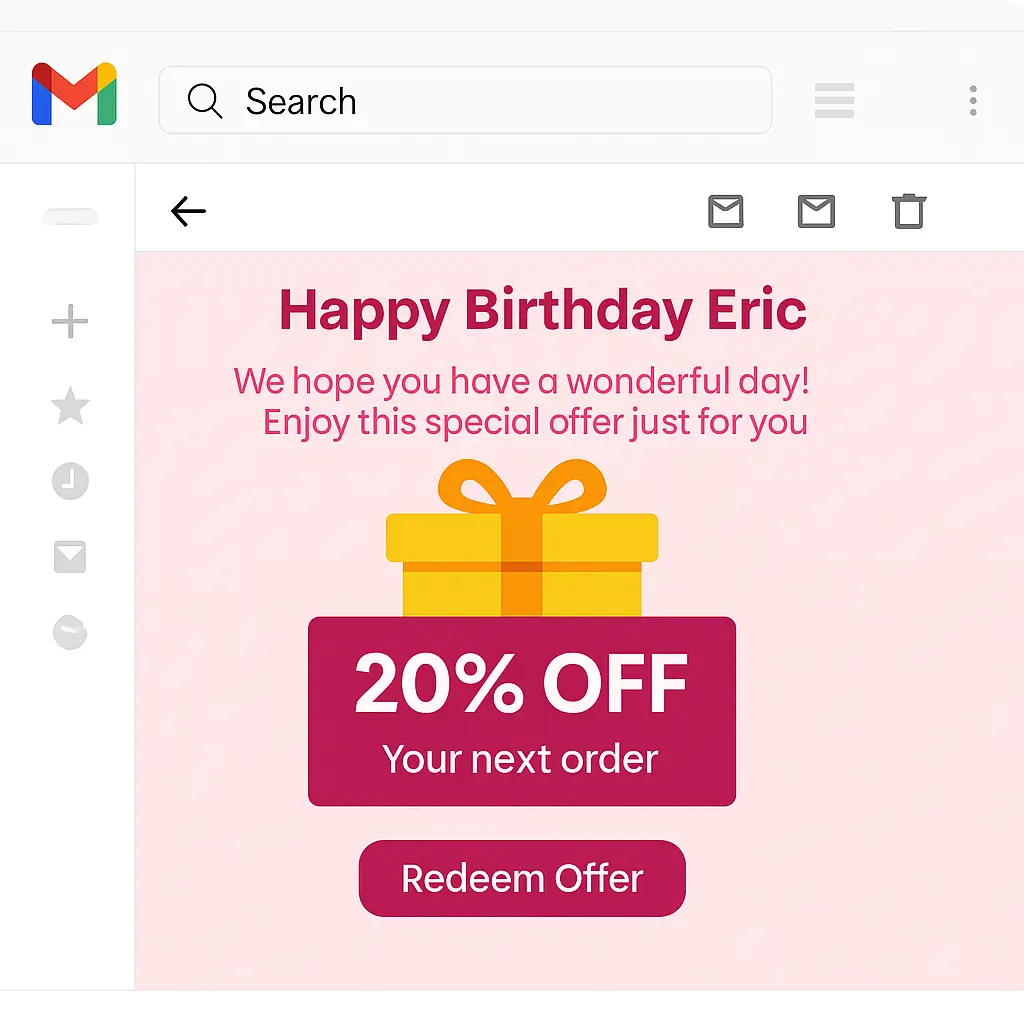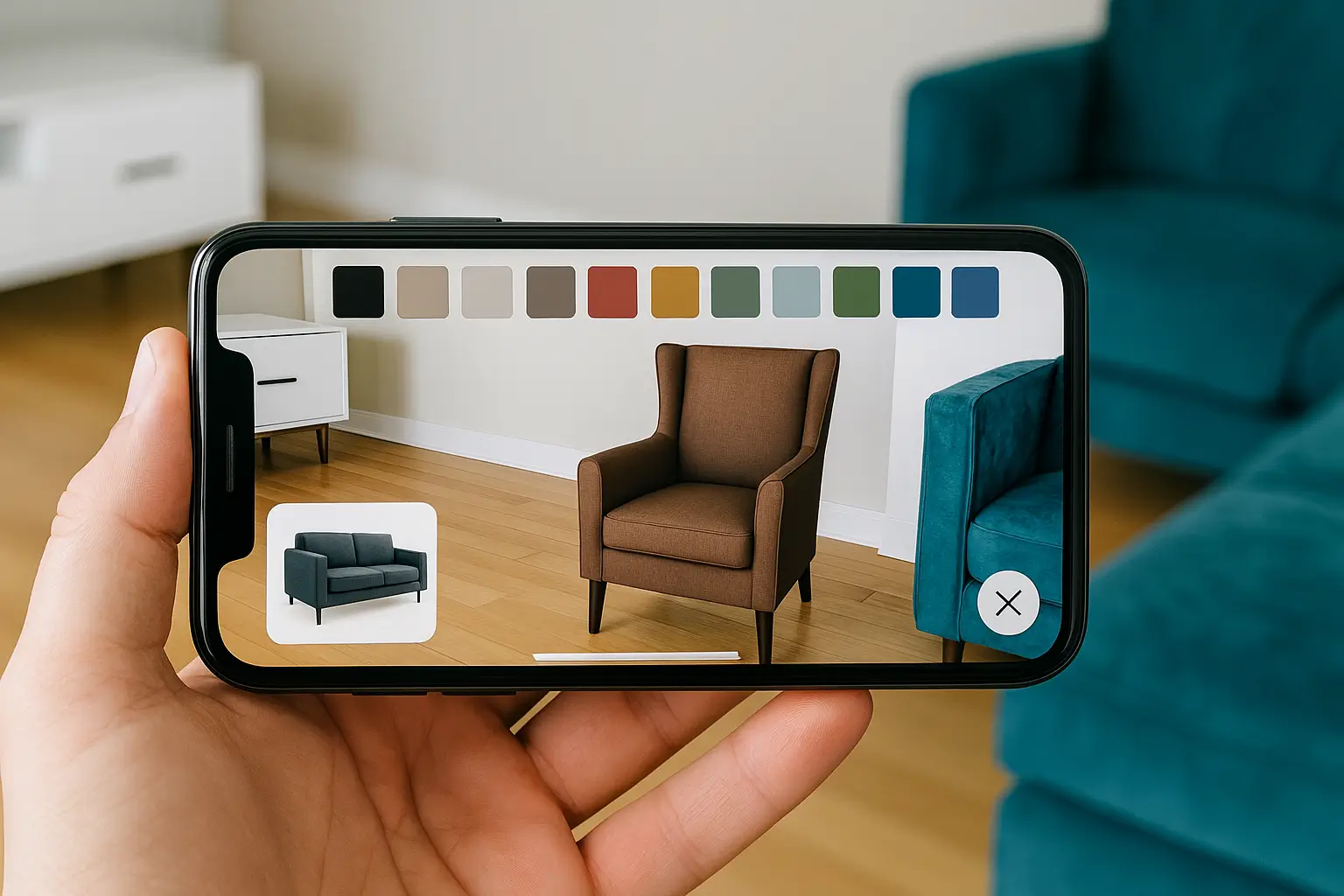
Piyush

Engaging customers effectively is the backbone of a successful retail business. According to research, 86% of shoppers are willing to pay more for a better customer experience. Rather than focusing solely on transactions, brands are shifting towards long-term engagement strategies that build customer loyalty and advocacy.
Retail customer engagement is about creating meaningful interactions at every touchpoint. Whether through personalized marketing, omnichannel experiences, or innovative technology, businesses that prioritize engagement see higher retention, stronger brand loyalty, and increased sales.
Table of Contents:
Retail customer engagement refers to meaningful interactions leading to emotional engagement with a customer with a brand. It extends beyond purchases, encompassing personalized services, seamless omnichannel experiences, and tailored promotions.
Engagement occurs various multiple touchpoints, like in-store, online, or through loyalty programs. Retailers who invest in strong customer engagement in retail achieve higher conversion rates, enhanced retention and improved brand loyalty.
Simply selling a product isn’t enough in today’s competitive retail landscape. Customers expect meaningful interactions and personalized experiences that make them feel valued. Strong customer engagement turns one-time buyers into loyal advocates, driving long-term success. Here’s why retail customer engagement is Important:
Shoppers today have many choices, making it more challenging for retailers to retain their customers. Providing an excellent product is only half the bargain when building your online market; your customers today expect a long-lasting and highly interactive experience. If a brand does not deliver, customers are quick to leave.
Loyal customers don’t just buy from you again; they become advocates for your brand. The focus should be on offering customers long-term shopping experiences. Whether through exceptional service, personalized engagement, or exclusive perks, retailers must do a little more to earn customer loyalty.
Customers don’t buy products; they invest in experiences. Retailers dedicated to building connections with shoppers see higher spending and repeat visits. Customers not only buy your products, but they also trust your store and become repeat customers.
A well-executed retail customer engagement strategy can grow sales as customers return for more and do repeat business with you.
A well-engaged customer isn’t just another sale, they become the advocate of your brand. When people feel valued, they naturally develop a deeper connection with your store. This emotional connection makes them brand advocates who love talking about their good experiences. Word-of-mouth marketing remains one of the most powerful growth drivers, and engaged customers willingly do the promotion for you.
With eCommerce making shopping easier than ever, retailers require powerful differentiators, which is why in-store engagement is that advantage. A decade from now, consumers will not only demand products; they will seek immersive, memorable experiences.
Whether it’s personalized service, interactive displays, or exclusive events, creating an engaging in-store environment sets your brand apart and keeps customers coming back.
Loyalty programs strengthen retail customer engagement by rewarding repeat purchases. By rewarding customers for their continued support, retailers can strengthen brand affinity and customer retention.
Programs that offer points for purchases, referrals, and social media engagement create an incentive for customers to stay connected. Tiered loyalty systems, in which high-spending customers enjoy VIP benefits, add to this exclusivity.

For example, Calico’s loyalty program offers fast shipping, exclusive perks, and additional discounts, making customers more likely to continue shopping with Calico.
Incorporating game-like elements can lead to more engaging and fun for retail customer engagement. Gamification encourages customers to engage with content in an entertaining way. Retailers can offer spin-the-wheel discounts, purchase-based quests or rewards thresholds to prompt return visits.
For example, loyalty programs that offer badges or exclusive perks for frequent shoppers encourage continued engagement. By making shopping fun and rewarding, brands can increase retention and drive sales.

Customers appreciate exclusive deals tailored to their interests. Instead of sending out mass promotions, retailers should utilize customer data to tailor promotions to each shopper’s individual interests.
Retailers can send your offers based on previous purchases, browsing history, and geographic location as well. Sending personalized email campaigns with relevant discounts and exclusive perks helps to drive customers return to the site, boost conversion rates.
For instance, offering a discount on winter apparel to a customer who previously bought jackets ensures the offer is relevant and enticing.

Personalization significantly improves the shopping experience by making customers feel valued. When companies speak in a way that matches personal tastes, customers are more likely to engage and stay loyal. This included customer data in omnichannel touchpoints that help retailers personalize recommendations, emails, offers, and more.
Retailers can track shopping behavior, purchase history, and browsing patterns to deliver relevant promotions and product suggestions. For instance, birthday discounts or anniversary gifts projected to a consumer at any given point makes them feel special and strengthens the emotional connection that the customer has with your brand.

Providing a seamless experience across multiple channels ensures customers can interact effortlessly with your brand, whether in-store, online, or on social media. Omnichannel marketing integrates all these touchpoints, creating a unified shopping journey.
Integrating customer data on different platforms improves retail customer experience by enabling a seamless experience to the customers. Features like cart synchronization, “buy online, pick up in-store” (BOPIS), and targeted email reminders based on past behavior help guide customers through the buying process and keep them engaged.
Fast and efficient customer support is crucial for maintaining customer engagement in retail. AI-driven chatbots and live chat features help resolve customer queries instantly, improving satisfaction and increasing conversions. Retailers can integrate chatbots on their websites and apps to provide 24/7 real time customer support to customers.
These tools can answer FAQs, recommend products, and assist with order tracking. Live chat options with real customer service representatives further enhance the experience by offering personalized support, ensuring that customers never feel abandoned during their shopping journey.
Social media is a powerful tool for engaging customers and building brand affinity. Retailers must have an active presence on platforms like Instagram, Facebook, TikTok, and Twitter to interact with their audience. Posting engaging content, such as polls, Q&A sessions, contests, and live videos, keeps customers invested in the brand.
Encouraging user-generated content (UGC), where customers share their experiences, also strengthens community engagement. Brands that consistently engage with their audience on social media see increased brand recall and customer loyalty.
A streamlined checkout procedure is crucial for maintaining customer interest. Complex payment methods can lead to cart abandonment and frustration. One-click checkouts, mobile payments, and flexible payment plans decrease cart abandonment and increase customer engagement retail stores success rates.
An effortless payment experience is the assurance of a good brand experience and a way to get customers to think twice before abandoning their purchases.
Engagement shouldn’t end after a purchase. Engaging customers after the sale drives retention and build long term loyalty. Retailers can then follow up with thank-you emails, product recommendations and satisfaction surveys.
Offering guides or video tutorials on how to use purchased products for added value. Also, reward future purchases makes sure you keep the client engaged.
Engagement shouldn’t end after a purchase. Engaging customers after the sale drives retention and build long term loyalty. Retailers can then follow up with thank-you emails, product recommendations and satisfaction surveys. Offering guides or video tutorials on how to use purchased products for added value. Also, reward future purchases makes sure you keep the customer engaged.
Retailers can increase engagement by offering interactive and immersive shopping experiences, both online and in-store. Technologies like augmented reality (AR), virtual try-ons, and smart displays make shopping more immersive. These technologies elevate customer engagement in retail by enhancing the customer journey.
For example, AR tools allow customers to visualize how furniture would look in their homes before purchasing. Virtual fitting rooms help customers try on clothes digitally, reducing hesitation and increasing confidence in their purchases. These experiences make shopping more engaging, memorable, and convenient.

A successful retail strategy seamlessly connects online and offline shopping experiences. Customers often browse products online before purchasing in-store or vice versa, so retailers must ensure that their digital and physical storefronts are in sync.
Features like “click and collect,” in-store product availability checks, and in-store returns for online purchases create a fluid shopping journey. Ensuring customers receive the same promotions and customer service across all touchpoints helps maintain consistency and trust.
A successful retail customer engagement strategy includes personalization, seamless omnichannel experiences, and innovative approaches such as gamification and AI-driven assistance. Utilizing these strategies, retailers can improve customer engagement, increase retention and grow sales.
Implementing loyalty programs, community engagement through social media, and interactive shopping experiences to connect with the customer in a meaningful way. Keep refining your approach by analyzing customer behavior and adapting to their preferences.
The retail market is hyper-competitive, making customer acquisition and retention difficult. However, with the right tools and strategies, you can improves shopping experiences and long-term brand advocacy.
If you are seeking a solution to improve customer engagement strategies in retail stores, 99minds can assist you. Our advanced loyalty and gift card platform lets you personalize interactions, reward customer loyalty, and seamlessly integrate engagement strategies across all channels.